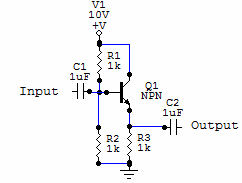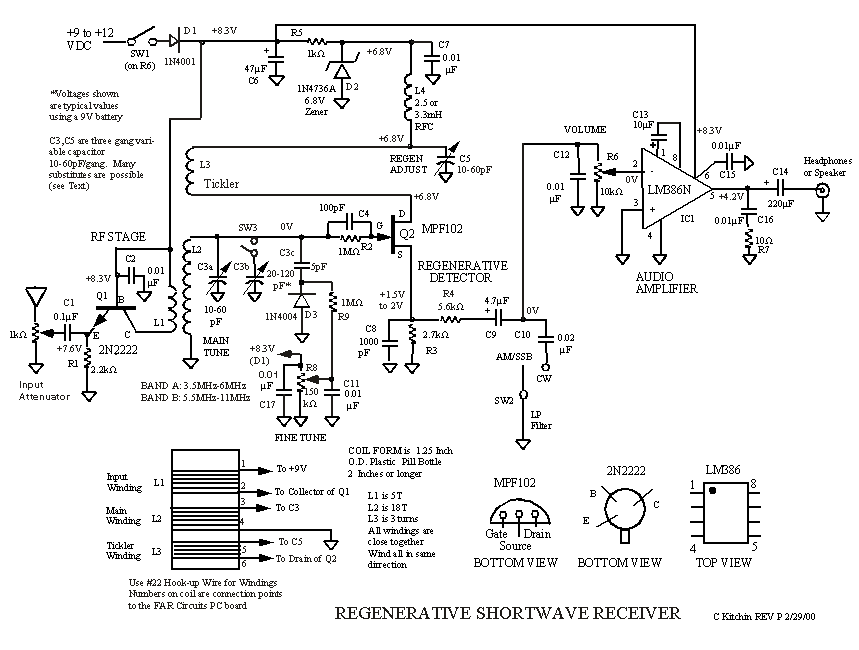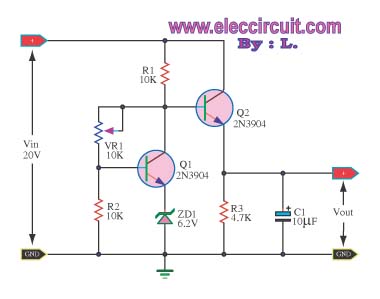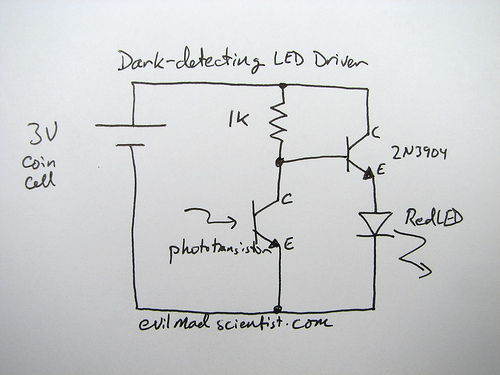
FM Radio Jammer With 2N2222 Transistor

This circuit can be utilized to jam FM radios in its vicinity. It is a classic single transistor oscillator operating in the VHF region. The working principle of the circuit is straightforward. Powerful VHF oscillations generated by the circuit will interfere with FM signals to nullify them. Components include a 2N2222 transistor, resistor, capacitor, battery, and inductor.
The described circuit is designed as a VHF oscillator, primarily using a 2N2222 NPN transistor, which serves as the active amplification component. The circuit operates by generating oscillations in the VHF frequency range, typically between 30 MHz and 300 MHz, which is the standard operational band for FM radio transmissions.
The configuration of the circuit includes a feedback loop that stabilizes the oscillation frequency. The inductor and capacitor form a resonant LC circuit, which determines the oscillation frequency. The resistor is used to set the biasing conditions of the transistor, ensuring it operates in the active region for optimal performance.
Power for the circuit is supplied by a battery, which provides the necessary voltage and current for the transistor to function effectively. The output of the oscillator is coupled to the antenna, which radiates the VHF signals. These signals interfere with nearby FM radio frequencies, effectively jamming the reception of legitimate broadcasts.
Due to the nature of this circuit, it is important to note that the use of jamming devices may be illegal in many jurisdictions, as they can disrupt legitimate communications and violate regulations set forth by telecommunications authorities. Therefore, this circuit should be used with caution and awareness of local laws regarding radio frequency interference.This Circuit can be used to jam FM radios in its vicinity. This is a classic single transistor oscillator operating in the VHF region. Working principle of the circuit is very simple and straight forward. Powerful VHF oscillations from the circuit will interfere with the FM signals to nullify it. Component: 2N2222 Transistor, Resistor , Capacitor, Battery, Inductor. [circuitstoday. com] 🔗 External reference
The described circuit is designed as a VHF oscillator, primarily using a 2N2222 NPN transistor, which serves as the active amplification component. The circuit operates by generating oscillations in the VHF frequency range, typically between 30 MHz and 300 MHz, which is the standard operational band for FM radio transmissions.
The configuration of the circuit includes a feedback loop that stabilizes the oscillation frequency. The inductor and capacitor form a resonant LC circuit, which determines the oscillation frequency. The resistor is used to set the biasing conditions of the transistor, ensuring it operates in the active region for optimal performance.
Power for the circuit is supplied by a battery, which provides the necessary voltage and current for the transistor to function effectively. The output of the oscillator is coupled to the antenna, which radiates the VHF signals. These signals interfere with nearby FM radio frequencies, effectively jamming the reception of legitimate broadcasts.
Due to the nature of this circuit, it is important to note that the use of jamming devices may be illegal in many jurisdictions, as they can disrupt legitimate communications and violate regulations set forth by telecommunications authorities. Therefore, this circuit should be used with caution and awareness of local laws regarding radio frequency interference.This Circuit can be used to jam FM radios in its vicinity. This is a classic single transistor oscillator operating in the VHF region. Working principle of the circuit is very simple and straight forward. Powerful VHF oscillations from the circuit will interfere with the FM signals to nullify it. Component: 2N2222 Transistor, Resistor , Capacitor, Battery, Inductor. [circuitstoday. com] 🔗 External reference





